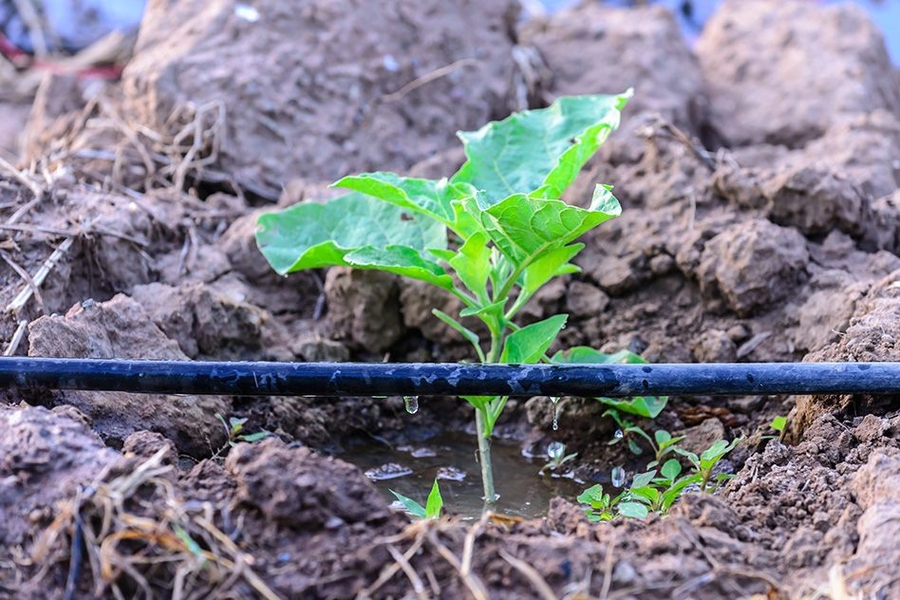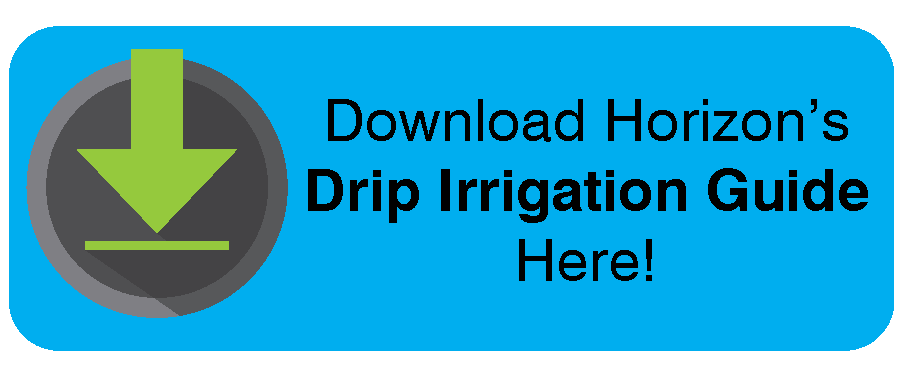- Categories:
- Irrigation
- Landscaping

Low Volume & Drip Irrigation systems offer many unique benefits to specific sections of a landscape. A careful consideration of these benefits can help you in determining the most effective and efficient method of irrigating a particular area.
- Ideal for Slope Irrigation – Problems associated with runoff are easier to control with a low volume system, since water can be delivered slowly to match the intake rate of soil.
- Reduced Water Waste – Since water is delivered to the root zone, there is reduced evaporation and runoff. This saves water, labor and materials associated with weed control operations.
- Uniform Application – Low volume irrigation systems can be designed so that all plants receive an appropriate amount of water. This can result in more even growth rates of similar plant materials and can permit more efficient irrigation of mixed planting beds.
- Salinity Tolerance – Low volume irrigation, if managed correctly, continually moves salt away from the plant out to the edges of the root zone. The process of microleaching allows salts to precipitate out along the edges of the wetted perimeter.
- Lower Installation Cost – The reduced trenching associated with low volume irrigation, can considerably reduce the time of installation.
- Promotes Plant Health – Plant health is aided by deeper watering, and a proper balance of soil, water, and air. Low volume irrigation can be adapted to work optimally with the characteristics of the soil type and can be manipulated to deliver the ideal amount of water.
- Problem Soils – Low application rates allow for absorption in tight clay soils and reduce water lost to deep percolation in sandy soils.
Specific Drip Irrigation Installation Information
Connecting Drip Tubing
Drip lines can be connected directly to existing hose bibbs. Typical hose bibb connections include an atmospheric vacuum breaker, in-line filter, pre-set pressure regulator, and swivel adapter which connects directly to the tubing. Drip lines can be connected to a specific in-line zone or valve or to a combination anti-siphon valve. The typical installation requires a Y-filter and a pre-set pressure regulator. In this situation, the drip zone can be operated automatically with the rest of the irrigation system from the controller.
Retrofitting Existing Spray Sprinkler Systems to Drip
Existing networks of spray sprinklers in shrubbery areas can quickly and easily be adapted to a more efficient and vandal-resistant drip system. First, the zone’s control equipment must be upgraded to include a filter, pressure regulator, and control valve with low flow capability. Then, existing sprays can be removed and replaced with multiple-outlet emitters. Distribution tubing is used to carry water from the emitters directly to the plants.
Drip Systems Require Filtration
The purpose of the filter is to prevent clogging of the drip emitters and other water delivery nozzles. This is very important since drip devices have very small orifices and can easily clog without the proper protection. Emitters can also be clogged by calcium carbonate build-up. Replacing the emitters or injecting diluted acid in the system can solve this. See your Horizon representative for help in this procedure and how to evaluate which method of control is more cost-effective. Bug plugs placed at the end of 1/4" tubing discourage insects from entering and clogging the tubing.
Drip Systems Require Pressure Regulation
Pressure regulators are typically preset to 20 or 30 pounds PSI. Pressure regulators are used for reducing pressures to proper levels for low volume system operation. Regulating pressure is important since high pressures cause emitters to blow off and fittings to separate from drip tubing.
Water Delivery Tubing or Piping
Water can be transported from the drip zone control valve through either conventional PVC pipe or ½" polyethylene tubing. In the case of a system that utilizes PVC piping, emitters are typically mounted to nipples rising from the PVC line. This may be a convenient method when retrofitting an existing conventional spray head system.
Polyethylene tubing can be run directly from the valve, either above or under the ground, and emitters placed anywhere along the tubing run. A mixed system uses PVC pipe from the valve to the vicinity of irrigation and changes to polyethylene at nipples rising from tees and elbows in the pipe.
Distribution ¼" tubing is designed to be used near the point of water delivery. They are typically connected to the outlets of drip emitters to place water directly at the base of a specific plant.
To prevent connection problems, it is important to correctly match the fittings with the type of delivery piping or tubing used.
A Wide Selection of Emitters
Drip emitters apply water at very slow application rates. Bubblers are designed for use in shorter watering cycles when faster application rates are desired. Microsprays are designed for general planted areas, such as groundcovers. Emitter line is tubing with in-line emitters placed at specific intervals and is ideal for row plantings or loops around shrubs and trees. Netafim Techline emitter line can be installed directly underground. Underground installations can be designed to match the irrigation requirements of groundcovers and plant groupings. Underground installation systems utilize unique fittings and design guidelines determined by the manufacturer.
